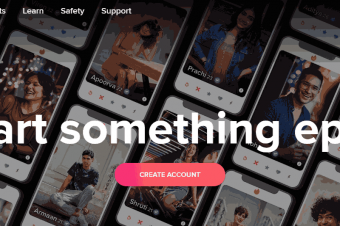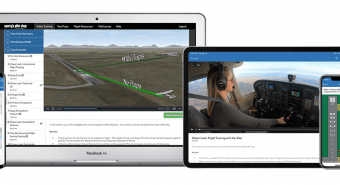Identify The Problem
Tags: Business Analysis
Use business analysis techniques to identify a business pain point, find its root cause, and sell the value of fixing it
Last updated 2022-01-10 | 4.5
- Learn to identify business problems- pain points
- and opportunities utilizing various tools and techniques such as interviews
- observations
- surveys
- and more
- Understand how to break down the identified problem into its root causes through techniques such as the Five Whys and the Fishbone Diagram
- Create a Project Proposal that details the problem and the value to be gained from solving it
What you'll learn
* Requirements
* No experience necessary. This course will teach you the first step in the Business Analysis Process.Description
Become the Business Analyst everyone wants to work with by learning how to solve an organization’s problem before they make a costly mistake.
Many organizations think that the most important thing to do when faced with a problem is to solve it as quickly as possible – but they couldn’t be more wrong.
Abraham Lincoln famously once said “give me six hours to chop down a tree and I will spend the first four sharpening the axe”, when talking about the importance of preparation – and that advice can apply to solving business problems too.
Companies will often want to jump straight into finding a solution without taking the time to prepare and fully understanding the problem – this results in sub-optimal solutions, or worse, a solution that doesn’t even solve the problem.
It is your responsibility as a Business Analyst to prevent this from happening…
And this course will teach you exactly how to do that.
Course enrollment grants you lifetime access, with no expiration, to all the course lectures, activities, handouts, and quizzes. In addition, you’ll also receive 1-on-1 support for any questions or uncertainties that come up. And this all comes with a money-back guarantee. You have nothing to lose and so much to gain.
Looking to get ECBA certified? - This course qualifies for 3.5 hours of Professional Development
The BA Guide’s 5 Step Process to Identify & Define a Business Problem
In this course, I’ll teach you my 5-step method on how to use business analysis techniques to identify an organization’s pain points and how to go about solving them. Then, you’ll learn how to convince these businesses that your plan adds organizational value and gain the approval necessary to begin work.
The 5 steps will show you how to:
Identify the Problem
Analyze the Root Cause
Determine the Potential Value
Create a Project Proposal
Gain Project Approval
Within each step, you’ll learn the techniques, tools, and skills through the use of practical, real-world examples – meaning you won’t just understand the 5 steps, but you’ll also know how to apply them.
Just ask the students who’ve already taken this course:
"The manner in which Jeremy instructed this course is top-notch. He explains concepts in a way that is easy very to understand and also provides concrete examples and scenarios to back up those concepts which made the course very engaging. He is also extremely responsive in answering questions. This course authored by Jeremy is highly recommended and I look forward in taking more BA courses instructed by him. - Philip
"The course is awesome, didn't see similar before. Like how Jeremy explains, how he highlight key points and how he provide us by different types of a very useful templates, which we can use in our daily job. Highly recommended for everybody who wants to become an experienced business analyst. Jeremy and his courses will definitely help you to achieve your goal!" – Aykhan
“Jeremy courses are the biggest contributors to my understanding to business analysis. This is my 4th course I'm taking of his. Great lecturer” – Kyle
What else is included?
Of course, anyone who has studied one of my courses before will know, it simply wouldn’t be a course by The BA Guide if I didn’t include some value-packed bonus material!
As one of my students said, “you give away everything… INCLUDING the kitchen sink!”
Here’s what you get as complimentary extras with the Identify and Define the Problem course:
A 20+ Page Student Workbook
Business Analysis Glossary
Interview elicitation template
Survey elicitation template
Observation elicitation template
Fishbone diagram template
Project proposal template
These templates won’t just be great practice either – they’ll serve as vital tools to help you identify and define the problem on the job too, long into your career.
In addition to all the tools you’ll need to start identifying and solving problems, you’ll also get a foot into the field by way of an industry expert…
I’m not just the instructor who wrote this course, I will also act as both a resource and a mentor to guide you to a long and rewarding career in Business Analysis!
This course is the first course of the Business Analysis Process Series:
=> Identify and Define the Problem <=
Conduct a Strategy Analysis
Plan the Project
Understand and Elicit Requirements
Analyze, Model, and Organize Requirements
Manage, Prioritize, and Validate Requirements
Transition to the Solution
Complete a Solution Evaluation
Hear what others had to say:
“It's been an eye-opening to my personal development process especially for my analytical skill to apply in my current job task and be prepare for my future growth and opportunities.” - Cindy
“Love Jeremy, all his courses are explained step by step and it includes many download for future reference. A++++++++” - Yohanna
“This is such a great course. The …[BA Guide]… is extremely knowledgable and goes into a lot of detail about how and why things are done.” – Tonia
And if you’re still not sure – here’s my promise to you:
This course comes with a 30-day money back guarantee! That means, if you aren’t completely satisfied with your purchase, I’ll give you a refund – no questions asked!
Whether you are an aspiring or a seasoned Business Analyst, this course is a must.
By the end of this course, you’ll have learned the best practices for handling problems and be equipped with the tools necessary to help you save organizations money… not to mention make you look like the hero in their time of need!
So, what are you waiting for? Enroll today!
Who this course is for:
- Aspiring or current Business Analysts
- Aspiring or current Project Managers
- Business professionals who are tasked with finding pain points and areas of opportunity within their organization
- Anyone who has a change idea for an organization and wants to present it in a way to give the best chance to gain approval to move forward
Course content
9 sections • 73 lectures
Introducing the Student Workbook Preview 02:55
The student workbook is a guided notes sheet students will use throughout the course, this video explains how to use it.
Additional Notes for the Student Workbook Preview 00:09
Course Kickoff and Overview Preview 02:36
Identifying and defining the problem is a very important part of Business Analysis. In this video, we provide you with key tips to help you get started.
The BA Guide's Business Analysis Process Explained Preview 01:58
The BA guide has created handy a Business Analysis process. This lecture explains why we use it, and how it be beneficial to you.
Why Identify the Problem at All? Preview 01:18
Why is it so important to Identify and Define the Problem? Come and learn why we do it, and why it's so crucial to a business.
Udemy Review Prompt Preview 00:28
Key Terms Defined - Needs, Project, Value Preview 01:21
Needs, Project, and Value, those are the three key terms that you will hear throughout this course. But what do they mean?
Course Resources - for your convenience Preview 00:19
In this lecture, we provide you a ZIP file that contains all of the downloadable resources for the course. While those downloads are still available on appropriate lectures throughout the course, we're providing this ZIP file for convenience and to avoid some of the nuances and issues with downloading the files individually. It is our recommendation that you download this file now and then pull up the files as they are referenced within the course. Happy learning!
Business Analyst Glossary of Terms + Download Preview 02:50
This is a brief introduction lecture to The BA Guide's Business Analyst Glossary of Terms. I walk you though the glossary and explain how to utilize it.
The End Goal Preview 01:13
This lecture explains what the end goal is when you identify the problem.
IMPORTANT LINKS - Please review and bookmark Preview 00:08
Problem Identification Initiation Preview 01:34
Before Identifying the problem, the question "What problem are we solving?" needs to be asked.
Focus on the Problem Preview 01:28
This lecture is a short continuation of the previous lecture, elaborating further on the question "What problem are we solving?"
Get to the Root Preview 01:44
When Identifying the problem you need to get to the roots; you need to find out if another issue is underlying the main problem.
Setting the Stage for the Remainder of the Course Preview 03:19
In this lecture, Jeremy helps set the stage for the rest of the course.
Observation Technique: Key Concepts Preview 02:29
An awesome technique you can use for Problem Identification is observation. Come and learn about how observation will help you Identify the Problem.
Observation Technique: Mini-Activity Preview 02:04
In this lecture you get to put your observation skills to the test!
Observation Technique: Active Observation Preview 02:21
There are different types, and ways to observe. Come and learn about active observation in this video!
Observation Technique: Passive Observation Preview 05:37
There are different types, and ways to observe. Come and learn about passive observation in this video!
Observation Technique: Participatory Observation Preview 03:45
There are different types, and ways to observe. Come and learn about participatory observation in this video!
Observation Technique: What Are You Looking For? Preview 04:51
"What are you looking for when you are observing?" This great question is answered in this lecture.
Observation Technique: Planning an Observation Preview 06:31
Now that you know what to look for and the different ways to observe,this video teaches you how to set up an observation.
Planning for an Unnoticed Observation Preview 00:38
Observation Technique: Executing an Observation Preview 05:38
Setting up the observation was only the first step. Come and learn how to execute one!
Observation Technique: Documentation Template Preview 01:18
Creating your own elicitation notes templates can be such a drag... but don't worry, we've got you covered! As a resource to this lecture you will find a downloadable template. Be sure to download the template and utilize it for any of your future OBSERVATION elicitation activities.
Observation Technique: Validate Your Understanding
Term Explained: Waterfall Preview 01:30
Interview Technique: Overview and Benefits Preview 02:04
Interviews are one of the most popular forms of elicitation. Here is an overview, and the benefits of interviews.
Interview Technique: Cautions Preview 03:13
While interviews are great, here are some cautions to consider.
Interview Technique: Types Preview 04:16
There are so many different types of interviews. This lecture covers them, as well as the 3 key components of an interview.
Interview Technique: Planning Overview Preview 01:34
In this lecture, we cover the two stages to planning an interview.
Interview Technique: Planning Questions Preview 03:24
One of the hardest parts of setting up an interview is coming up with the questions. Here are some ways to make that easier!
Interview Technique: Planning Time Preview 03:16
An important thing to consider when setting up an interview is how much time needs to be allotted to conduct the interview properly and successfully.
Interview Technique: Recording the Session Preview 03:33
This short lecture covers why you should, or shouldn't record an interview.
Interview Technique: Planning Location Preview 05:10
The last step when prepping an interview is determining the location.
Interview Technique: Finalize Planning Preview 02:02
This lecture explains how to finalize your interview after you've complete the 4 crucial steps to set up you interview.
Interview Technique: Conduct the Interview Preview 06:33
This lecture provides how to actually conduct the lecture, and some things to keep in mind while doing so.
Interview Technique: Documentation Template Preview 02:21
Creating your own elicitation notes templates can be such a drag... but don't worry, we've got you covered! As a resource to this lecture you will find a downloadable template. Be sure to download the template and utilize it for any of your future INTERVIEW elicitation activities.
Interview Technique: Validate Your Understanding
Survey Technique: Overview, Benefits, and Cautions Preview 04:02
This video introduces the benefits an cautions of the popular elicitation technique, surveys!
Survey Technique: Types of Questions Preview 02:25
This lecture covers what types of questions you should put in your survey.
Survey Technique: Overcoming Common Challenges Preview 04:41
Come learn how to overcome some of the challenges to survey making!
Survey Technique: Plan Your Way to Success Preview 06:04
Planning is the most important part of survey creating, it could make or break your survey.
Survey Technique: Post Planning Preview 01:32
This lecture covers the question "I'm done planning, what now?"
Survey Technique: Documentation Template Preview 03:29
Creating your own elicitation notes templates can be such a drag... but don't worry, we've got you covered! As a resource to this lecture you will find a downloadable template. Be sure to download the template and utilize it for any of your future SURVEY elicitation activities.
Survey Technique: Validate Your Understanding
Additional Tools Preview 07:08
Here are some additional tools to use with your elicitation techniques!
Choosing a Technique Preview 02:46
How do you choose the right elicitation technique? Well this lecture is here to help with that!
Bob's Towing Example: Choosing a Technique Preview 02:53
A continuation of the previous lecture about choosing the right technique. But this lecture provides a real world scenario to help you understand.
Root Cause: Five Whys Preview 04:12
Here is a tip to help you better find the root cause to a problem, The Five Whys!
Root Cause: Fishbone Preview 02:03
Another tip to help you better find the root cause, The Fishbone Diagram!
Bob's Towing Example: Transitioning Back to the Example Preview 00:37
Bob's towing scenario recap from the previous lecture.
Bob's Towing Example: Interview Prep (Part 1 of 2) Preview 06:55
This lecture explains setting up an interview with our real world scenario, Bob's Towing.
Bob's Towing Example: Interview Prep (Part 2 of 2) Preview 05:23
The second part to the previous lecture about setting up an interview with Bob's Towing.
Bob's Towing Example: Conduct Interview + Fishbone Example Preview 06:50
How to conduct an interview to find the root issue, while using The Fishbone Diagram.
Bob's Towing Example: Finishing the Fishbone Preview 06:59
How to finish your Fishbone Diagram after meeting with your client, (Bob's Towing).
Bob's Towing Example: Researching Prank Calls Cause Category Preview 02:39
Bob's Towing seems to be having an issue with prank calls. Come and learn how to work through a root cause on your Fishbone Diagram
Bob's Towing Example: Choosing the Next Technique Preview 01:42
In this next lecture, we cover how to figure out what the next technique would be the most useful for our client, Bob's Towing.
Bob's Towing Example: Observation Prep Preview 04:11
The next step for Bob's Towing is observation. Come and learn about observation preparation.
Bob's Towing Example: Conduct Observation Preview 03:52
Now it is finally time to conduct the observation for Bob's Towing, come and learn how a observation gets conducted real time.
Bob's Towing Example: Root Problem Identified Preview 02:31
Now that we have done all of out techniques for Bob's Towing, it is time to determine what the root problem for Bob is.
Not Planning Every Detail is Okay Preview 03:46
Not planning every single detail when finding the root cause for a client is okay. Come and learn about why!
Choosing a Technique - Test Your Skills Preview 02:05
Reaffirming the Concept of Value + How to Determine Preview 05:49
This lecture recaps determining value from earlier on in the course.
Project Proposal Basics Preview 02:28
Now that you have determined the value, you get to create a project proposal!
Project Proposal Sections Preview 03:29
There are different sections to creating a project proposal, this lecture explains them.
Introducing the Project Proposal Template Preview 00:35
Have a handy-dandy project proposal templates, for all of your future project proposals.
Bob's Towing Example: Project Proposal Preview 08:17
Let's revisit Bob's Towing to show how our project proposal template works!
Gaining Project Approval: Sponsor Preview 05:42
Gaining approval is the next big step for your project, let us help!
Gaining Project Approval: Governance Preview 02:39
Gaining approval from a governance committee is the next big step for your project, let us help!
Project Proposal + Gaining Approval: Validate Your Understanding
Course Recap Preview 01:51
This lecture is a short recap and conclusion for our course! Congrats on all of your learning!








 This course includes:
This course includes:
![Flutter & Dart - The Complete Guide [2022 Edition]](https://img-c.udemycdn.com/course/100x100/1708340_7108_5.jpg)















